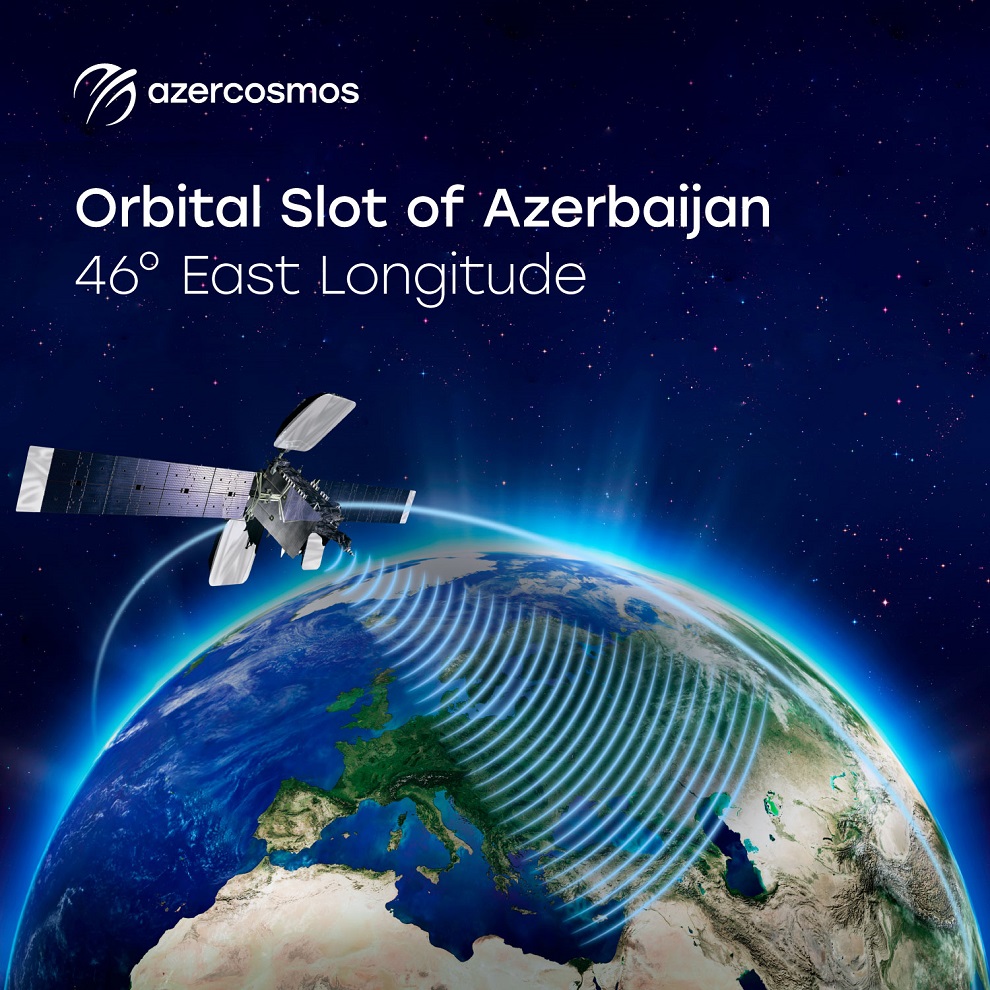The management of the C and Ku frequency bands served by the Azerspace-1 satellite located in the 46° East longitude geostationary orbit (GSO) slot is registered in the name of the government of Azerbaijan. The International Telecommunication Union (ITU) has granted approval for the registration.
As is known, the Azerspace-1 telecommunication satellite, which was launched in 2013 in Malaysia’s orbital slot 46° E and operated in the C and Ku frequency ranges of the orbital position. Now, the Azerspace-1 satellite is operating in the unique orbit of Azerbaijan.
46°E, the activity for transferring the position to Azerbaijan started on December 8, 2020, with the submission of the necessary documents to the ITU. Although the achievement of an orbital position in global practice covers a period under the seven-year ITU rule, this process was completed in three years by Azerbaijan’s specialists in this field. During the past three years, the Azerbaijani side has successfully concluded coordination negotiations on 265 satellite networks of 34 governments and reached agreements. Note that the 46° E GSO slot is the first and only orbital position that Azerbaijan has in the geostationary belt. This also allows Azerbaijan to deploy future telecommunication satellites in its unique orbital slot.
The geostationary orbit, which became a restricted space for satellites operating in telecommunications, broadcasting, and weather forecasting is located at approximately 36,000 from the equator. The main importance of this height is that the satellites here rotate at the same speed as the Earth’s surface. As a consequence, both satellite operators and customers, as well as those who watch television and radio from home via satellite, can receive a continuous signal from the satellite by keeping their antennas directed at one point. Lots of countries formally apply to the ITU for the use of available orbital positions in the geostationary orbit by themselves or through companies. The satellites that will be located in those positions are currently being assembled or waiting for launch. When a satellite in geostationary space reaches the end of its life of 15-20 years, the country that owns the orbital position has the opportunity to replace the satellite in that position. This principle of regulation actually allows countries to maintain their positions indefinitely.
For a country that is new to space industry, it is not easy to place a satellite in geostationary orbit. For this, a chosen orbital position needs to be agreed upon with countries that already have other positions. As a result, among countries with limited resources, such as the geostationary orbit, Azerbaijan already has its own place with its unique orbital position.












